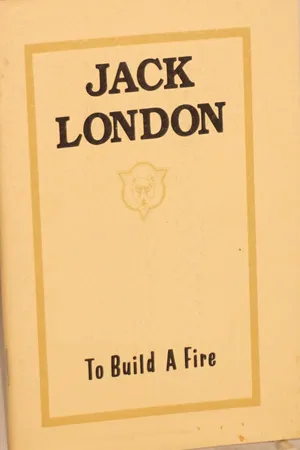To Build a Fire
About this book
"To Build a Fire" is a short story by American author Jack London. There are two versions of this story, one published in 1902 and the other in 1908. The story written in 1908 has become an often anthologized classic, while the 1902 story is less well known.
London educated himself at public libraries with the writings of Charles Darwin, Karl Marx, and Friedrich Nietzsche, usually in popularized forms. At 19 he crammed a four-year high school course into one year and entered the University of California, Berkeley, but after a year he quit school to seek a fortune in the Klondike gold rush. Returning the next year, still poor and unable to find work, he decided to earn a living as a writer.
London studied magazines and then set himself a daily schedule of producing sonnets, ballads, jokes, anecdotes, adventure stories, or horror stories, steadily increasing his output. The optimism and energy with which he attacked his task are best conveyed in his autobiographical novel Martin Eden (1909). Within two years, stories of his Alaskan adventures began to win acceptance for their fresh subject matter and virile force. His first book, The Son of the Wolf: Tales of the Far North (1900), a collection of short stories that he had previously published in magazines, gained a wide audience.
Frequently asked questions
- Essential is ideal for learners and professionals who enjoy exploring a wide range of subjects. Access the Essential Library with 800,000+ trusted titles and best-sellers across business, personal growth, and the humanities. Includes unlimited reading time and Standard Read Aloud voice.
- Complete: Perfect for advanced learners and researchers needing full, unrestricted access. Unlock 1.4M+ books across hundreds of subjects, including academic and specialized titles. The Complete Plan also includes advanced features like Premium Read Aloud and Research Assistant.
Please note we cannot support devices running on iOS 13 and Android 7 or earlier. Learn more about using the app.
Information
Table of contents
- (Untitled)
- (Untitled)
- Introduction
